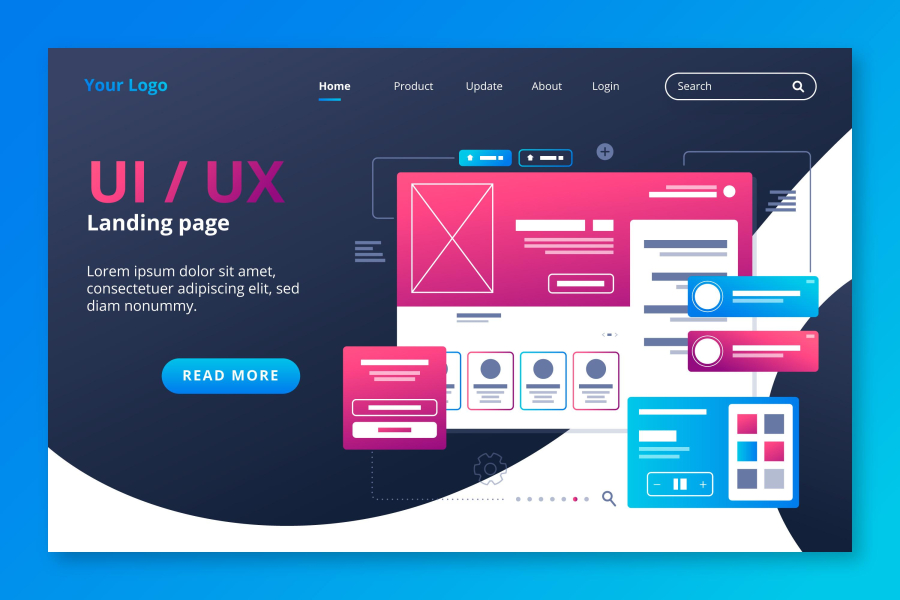PHP vs Node.js for Backend Development
When it comes to backend development, choosing the right technology is one of the most critical decisions every freelancer, web developer, or business owner has to make. Among the most popular choices, PHP and Node.js stand out as reliable and widely adopted backend technologies. Both power millions of websites and applications, but they differ in architecture, performance, scalability, and ease of use.
At freelancerbridge, we believe developers should understand these differences in depth before deciding which technology best fits their projects. Whether you are building a blog, an eCommerce store, a real-time chat application, or a large-scale enterprise system, knowing when to use PHP and when to use Node.js can save you time, effort, and resources.
This article will explain PHP vs Node.js in detail, covering their core concepts, strengths, limitations, use cases, and which one might be the better option for your freelance projects.
Long Description
1. Understanding PHP
PHP (Hypertext Preprocessor) is a server-side scripting language primarily designed for web development. Introduced in 1995, it has evolved to become one of the most widely used backend technologies. Over 75% of websites on the internet use PHP in some form, including WordPress, Facebook (earlier versions), and Wikipedia.
Key Characteristics of PHP:
Easy to learn and beginner-friendly.
Works well with relational databases like MySQL.
Compatible with almost every hosting provider.
Has a massive ecosystem of frameworks such as Laravel, CodeIgniter, and Symfony.
PHP is especially favored for content-driven websites, CMS platforms, and small to medium-scale projects due to its simplicity and widespread support.
2. Understanding Node.js
Node.js, on the other hand, is not a programming language but a runtime environment built on Chrome’s V8 JavaScript engine. Launched in 2009, it allows developers to run JavaScript on the server side. Its event-driven, non-blocking I/O model makes it extremely efficient for building scalable and real-time applications.
Key Characteristics of Node.js:
Executes JavaScript outside the browser.
Supports asynchronous programming for faster request handling.
Highly scalable and suited for handling multiple connections at once.
Strong ecosystem through npm (Node Package Manager) with millions of open-source libraries.
Node.js is popular among developers who want to use a single language (JavaScript) for both frontend and backend, making development faster and more cohesive.
3. PHP vs Node.js: Key Differences
a) Performance
PHP: Runs synchronously, meaning each request is processed one after another. While modern frameworks like Laravel have improved PHP performance, it still lags behind Node.js for real-time or high-concurrency applications.
Node.js: Uses asynchronous, non-blocking I/O, making it faster and more efficient for handling thousands of simultaneous connections. Ideal for chat apps, gaming platforms, and streaming services.
b) Scalability
PHP: Can scale vertically by adding more powerful servers, but horizontal scaling requires additional effort.
Node.js: Designed for scalability from the ground up. Its event-driven architecture allows it to scale horizontally across multiple servers easily.
c) Learning Curve
PHP: Easier for beginners, with a simpler syntax and decades of documentation available.
Node.js: Requires a stronger understanding of JavaScript and asynchronous programming, which may be challenging for new developers.
d) Ecosystem & Libraries
PHP: Has mature frameworks like Laravel, Symfony, and CakePHP, which provide excellent solutions for web development.
Node.js: Has npm, one of the largest ecosystems of open-source libraries, giving developers more flexibility and faster prototyping.
e) Hosting & Deployment
PHP: Supported by almost every hosting provider, making deployment extremely easy and cost-effective.
Node.js: Requires specialized hosting environments, but cloud platforms like AWS, Heroku, and DigitalOcean make it simple.
4. Use Cases for PHP
PHP is the go-to choice when:
Building content management systems (CMS) like WordPress, Joomla, or Drupal.
Developing eCommerce websites like Magento or WooCommerce.
Creating small to medium-sized business websites and blogs.
Deploying projects on shared hosting environments with limited budgets.
5. Use Cases for Node.js
Node.js is the better choice when:
Building real-time applications such as chat apps, collaborative tools, or online gaming platforms.
Creating RESTful APIs for mobile and web applications.
Developing streaming applications like video or music platforms.
Scaling large, data-intensive projects that require speed and concurrency.
6. Pros and Cons of PHP
Pros:
Beginner-friendly and easy to learn.
Huge community support.
Affordable hosting options.
Great for rapid development with frameworks like Laravel.
Cons:
Synchronous execution can slow performance.
Less efficient for real-time applications.
Modern developers may prefer newer technologies.
7. Pros and Cons of Node.js
Pros:
Asynchronous, fast, and scalable.
Unified language (JavaScript) for frontend and backend.
Massive npm ecosystem.
Perfect for real-time applications.
Cons:
Steeper learning curve for beginners.
CPU-intensive tasks may not be as efficient.
Hosting can be slightly more complex than PHP.
8. Which One Should You Choose?
The choice between PHP and Node.js depends entirely on the type of project you are building:
Choose PHP if your project involves content-heavy websites, CMS platforms, or traditional web applications where quick setup and affordability matter.
Choose Node.js if your project requires real-time features, scalability, or modern application architecture where performance is crucial.
For freelancers on freelancerbridge, mastering both PHP and Node.js can open more opportunities. Clients often need websites built on PHP-based CMS platforms, while startups and modern businesses prefer scalable Node.js solutions. Being skilled in both makes you versatile and more marketable.
Conclusion
Both PHP and Node.js are powerful backend development options. PHP has stood the test of time and remains dominant in powering content-driven websites, while Node.js has emerged as the go-to technology for modern, scalable, and real-time applications.
For freelancers, the best approach is to learn both technologies and choose based on project requirements, budget, and scalability needs. By doing so, you can deliver optimal solutions to clients and increase your chances of success in the competitive freelance marketplace.


 by Emily
by Emily




